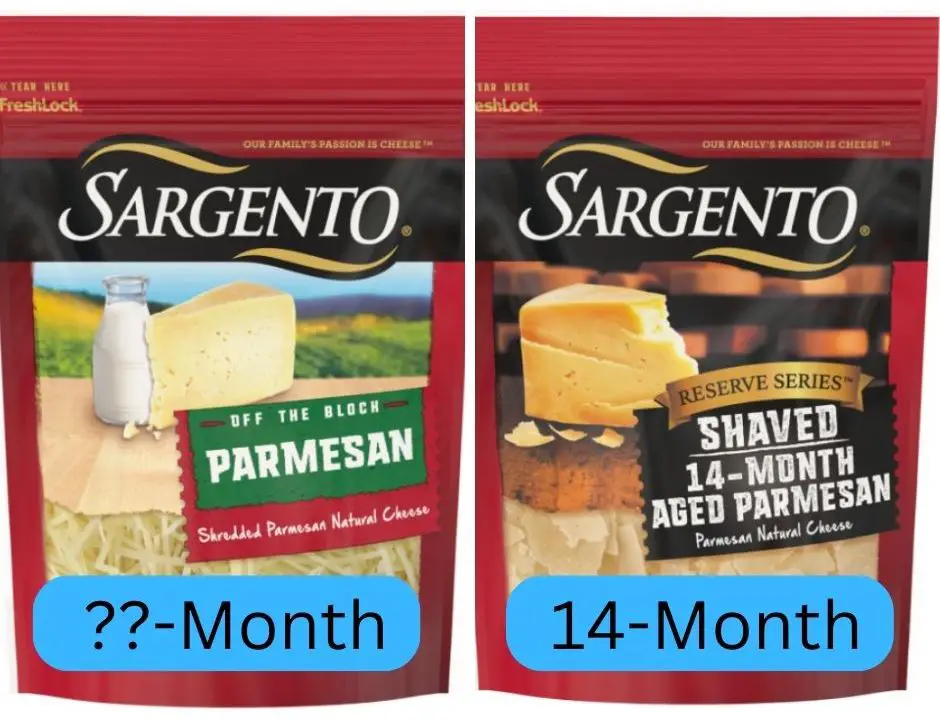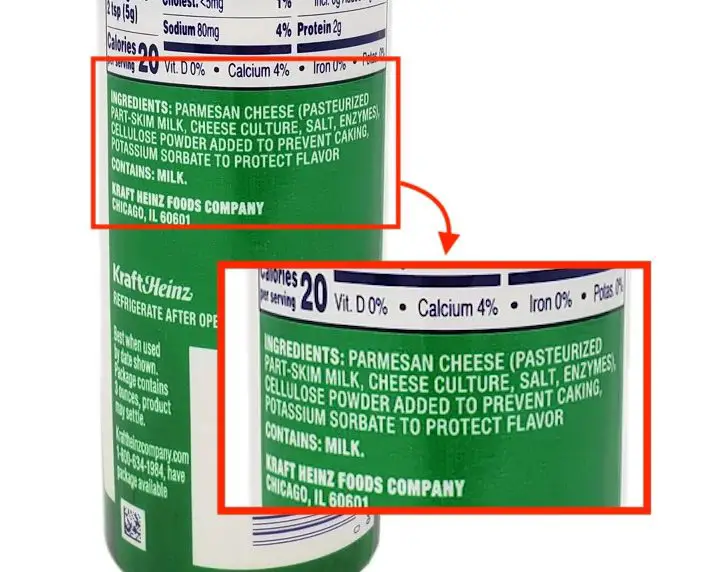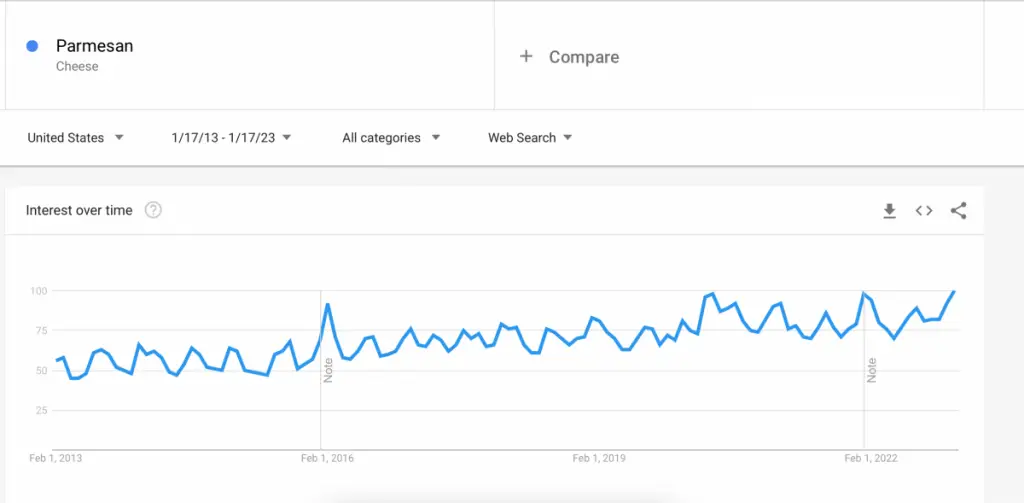Last Updated on January 17, 2024 by Aaron
Parmesan, also known as Parmigiano Reggiano, is a type of hard, aged cheese that is made in the Emilia-Romagna region of Italy. It is made from certain breeds of raw cow’s milk and is known for its nutty, fruity, and slightly sharp flavor.
Parmesan is a versatile cheese that can be used in a variety of dishes, from pasta and risotto to soups and salads. Below, we’ll talk about how that is compared to our regular, cheaper parmesan. Let’s get into it.
Table of Contents
But Why Is Parmesan So Expensive (anything special)?
The main reason that parmesan is expensive is that it is a Protected Designation of Origin (PDO) protected cheese, meaning that only cheese made in a specific region of Italy following strict guidelines can be labeled as “Parmigiano Reggiano.” This includes using only certain types of cows (mostly Friesian and Reggiana cattle) and specific methods of production — which include hay and grass diet without silage. The strict guidelines and regulations add to the cost of production, which is reflected in the price of the cheese.
Regular parmesan can be made anywhere with very few rules to follow and is not regulated, read more here. Therefore, the quality and consistency of regular parmesan may vary greatly from brand to brand and even from batch to batch.
The lack of strict rules and regulations means that some producers may cut corners in terms of the quality of the milk used, the aging process, and the methods of production. This can lead to a lower-quality product that does not have the same depth of flavor and complexity as Parmigiano Reggiano. Consumers should be aware that not all parmesan is created equal and should look for brands that use high-quality milk and follow traditional methods of production.
For instance, regular parmesan can be made from any kind of milk, i.e. pasteurized, skimmed or nonfat milk, and is usually aged for 10 months — which is the legal minimum for “parmesan cheese” according to the FDA. So, it’s far easier and less expensive to make. Most of the pre-grated or shredded parmesan found in supermarkets and grocery stores is made from this type of parmesan (e.g. Wisconsin-made), which is often referred to as “domestic parmesan” or “imitation parmesan.” They might still taste good though but will usually have a milder flavor and a softer texture compared to Parmigiano Reggiano.
This results in a different flavor and texture compared to the Italian parmesan, Parmigiano Reggiano, which is always made from unpasteurized raw cow’s milk and aged for a minimum of 12 months. Most are often aged for about 24-36 months, some can be longer — say 40-100 months.
During this aging process, the wheels of cheese are regularly checked, turned, and brushed to ensure that they are developing properly. So, it is a very labor-intensive process.

Most of the pre-grated or pre-shredded parmesan is much more affordable because it has aged the least. Additionally, they may contain cellulose (which is made from wood pulp, and some people prefer to avoid it), as an anti-caking agent, which is added to prevent the cheese from clumping together in the package, this is not found in Parmigiano Reggiano. And, natamycin or potassium sorbate to prevent mold growth. Because of these differences, domestic parmesan is often less expensive than Parmigiano Reggiano, but it does not have the same quality and taste.

The Price Differences
When it comes to purchasing parmesan, there is a significant difference in price between Italian parmesan, Parmigiano Reggiano, and regular parmesan at the grocery or specialty cheese counter. Because they can only come from Italy and take such a long time to age, Parmigiano Reggiano can cost anywhere from $15 to $25 or even up to $50 per pound, while regular ones may cost around $8 to $12 per pound. However, it’s no surprise that the taste, texture, and quality of Parmigiano Reggiano are superior to the cheaper supermarket parmesan.
If you are looking for the top-notch Parmigiano Reggiano — the real deal — we have previously covered the 7 best (World Cheese Award) parmesan cheese brands in another post.
Fun fact, it’s true that parmesan cheese can be quite expensive, but there are other cheeses that are far more expensive than parmesan. For example, the Serbian Pule cheese made from the endangered donkey milk sells for $576 per pound — easily the most expensive cheese in the world — where it takes 125 donkeys milking to make just 2 pounds of cheese!

Supply Shortage & Increasing demand
The COVID-19 pandemic has led to disruptions in the supply chain for many products, including parmesan cheese. This has been caused by factors such as the closures of processing plants and restrictions on transportation. Additionally, the demand for parmesan has been increasing in recent years due to its popularity as a versatile ingredient in cooking. This has led to shortages of parmesan, and in some cases, higher prices for consumers.
On top of that, meeting the growing worldwide demand for Parmigiano Reggiano is difficult due to the limited number of dairies in Italy, with only 400 in total, and a significant portion of them being located in mountainous areas. Furthermore, the scarcity of Parmigiano Reggiano has led to a thriving black market, making it even more challenging for legitimate producers to keep up with demand.

